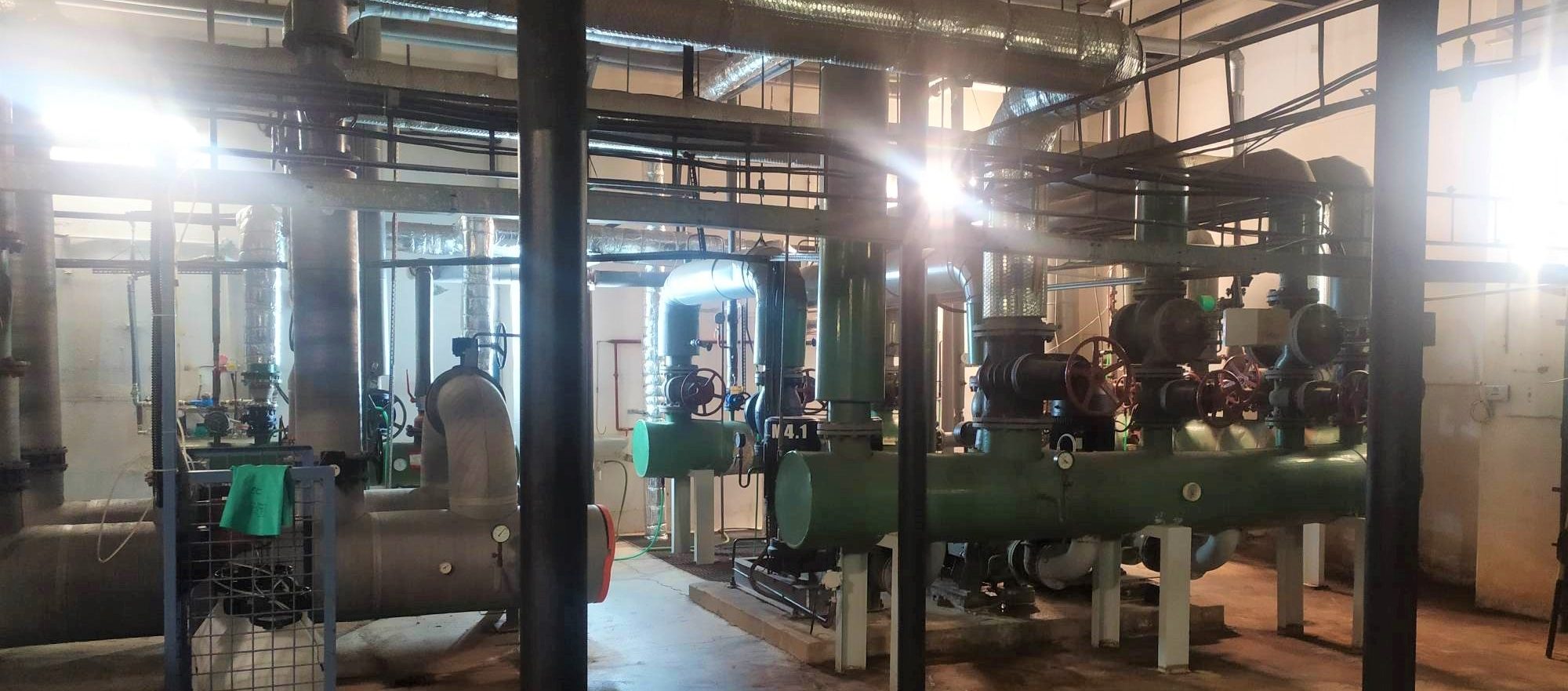
In January of this year, the Polish Green Network travelled to Bratislava to participate in a workshop entitled ‘Decarbonisation of the heating industry – geothermal energy and energy communities’. The workshop included presentations, discussions and a study visit to a geothermal heating plant in Galanta near the Slovakian capital.
The first part of the workshop was devoted to the issue of planning the transition to district heating. Michaela Valentova from the Czech Technical University in Prague presented a transformation pyramid of the district heating sector, comprising strategic planning, energy saving, waste heat use and local heat sources, among other measures. Unfortunately, many European cities still lack a development strategy for district heating. With transformation of the sector at a critical crossroads, a rigorous analysis of objectives, costs, consumption scenarios and the availability of new technologies is urgently needed. However, as Valentova notes, planning in central and eastern European countries must improve if these transformation challenges are to be met.
Sara Herreras Martinez from Utrecht University, the Netherlands, introduced a decarbonisation development plan that aims to increase renewable heat sources in Dutch cities. Although 92 per cent of Dutch buildings are supplied by gas heating, primarily through individual heat sources, the Netherlands forecasts that 1.5 million buildings will decarbonise their heat sources by 2030 and 7.6 million by 2050.
Dutch cities and municipalities invited key stakeholders, including housing associations, district heating companies, and electricity and gas network operators, to join the heat transition planning process. As a result, municipalities were able to collect important input data and identify constraints and opportunities. This kind of analysis was deemed crucial for drafting an action plan and arriving at a suitable starting point.
The planning process helped to highlight, among other things, the need for more binding guidelines for homeowners on the removal of gas connections, which is slowing the momentum of ongoing projects. In addition, it revealed that sourcing and adequately financing more competitive and sustainable heat alternatives should be prioritised. Other barriers identified include staffing shortages and a lack of knowledge among local authorities, who depend heavily on external expertise when it comes to heating analysis and planning.
The Polish Green Network and representatives of institutions from other central and eastern European countries visited a geothermal heating station in Galanta. Commissioned in 1996, the station draws geothermal water from two wells and supplies heat to around 1,300 homes as well as an adjacent large hospital building. The 77 °C geothermal water is pumped from a depth of 2,100 metres.
The district heating plant uses four heating loops with different water temperatures:
- Heating loop 90/70 °C – radiator heating system for the hospital
- Heating loop 77/52 °C – radiator heating for multi-family houses
- Heating loop 52/42 °C – radiant ceiling heating for the hospital
- Hot water preparation loop 55 °C – combined system for multi-family dwellings
In 2007, a geothermal spa was built in Galanta. The primary source of heat for the resort is provided by geothermal water discharged from the station. This increasingly efficient use of geothermal energy by the town has also had a positive effect on tourism in the region.
The geothermal project in Galanta represents a significant investment in the use of renewable energy in Slovakia. The focus now will be to make sure heat continues to be generated ecologically, and that thermal energy is delivered at an affordable price. No significant complications or problems have arisen during the decade-long operation, and the geothermal station still reliably supplies heat to all consumers.
Elsewhere, the Polish coal regions of Eastern Wielkopolska and Silesian Voivodeship, which are fortunate to have the conditions required for developing geothermal heat in place, are forging similar plans. In Konin, for example, the phasing out of coal mining and investment in renewable energy has already begun. Our hope is that all areas that rely on fossil fuels in these regions will follow suit and embrace the energy transition challenge.
